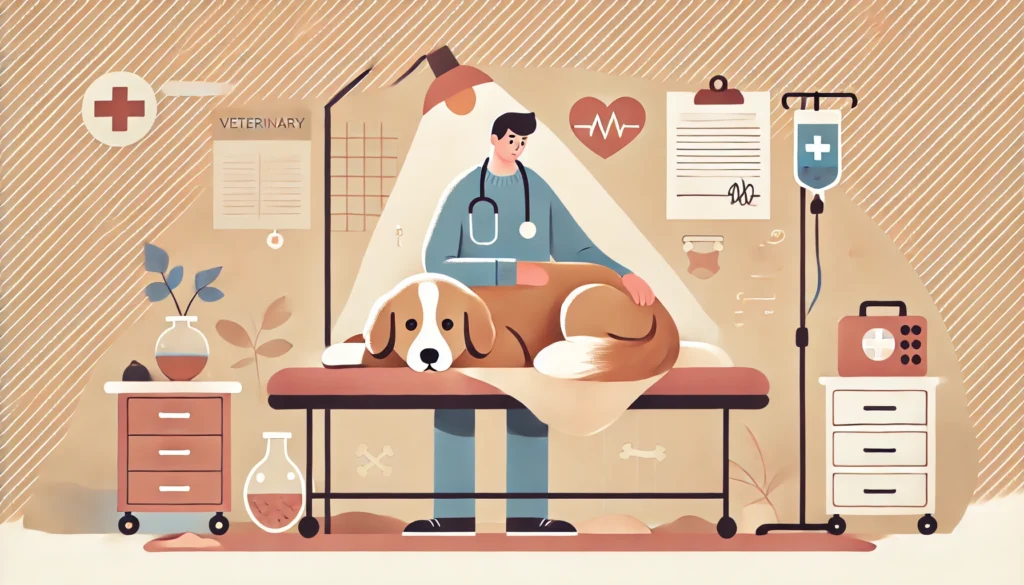Introduction
Surgical techniques may be a stressful revelation for puppies, whether it is a recurring operation or a more complicated manner. As pet proprietors, understanding the recuperation method and how to manage your dog’s well-being at some point during this time is crucial. One not unusual concern is dysphoria, a state of bewilderment, disorientation, or soreness that some puppies experience after surgical treatment. Even as that is commonly a temporary condition, it’s critical to understand how lengthy it will ultimately be and what steps you may take to help your dog feel better.
Understanding Dysphoria in Dogs
Dysphoria can rise from a combination of factors, inclusive of anesthesia, aches, or strain, which can result in confusion and behavioral adjustments in puppies. It’s normal for dogs to appear disoriented, stressed, or agitated following a surgical operation. However, those symptoms are frequently misinterpreted as different problems like anxiety or aches. In my years of working with puppies, I have found that spotting the unique causes of dysphoria helps alleviate concerns and allows for more effective control of your canine’s healing.
What Causes Dysphoria in Dogs?
Several elements contribute to dysphoria in puppies, and expertise can assist you to reply appropriately:
Anesthesia
Anesthesia is commonly used at some stage in surgical treatment to keep dogs at ease, but its outcomes can linger after the system. The medicines used affect your dog’s relevant worried machine, leading to brief disorientation or confusion. Most dogs will recover from the outcomes of anesthesia in some hours to a day, but some may also take a bit longer, especially older dogs or the ones who’ve passed through longer surgeries.
Pain
While pain medications are administered to keep dogs comfortable, they may not completely eliminate all discomfort. Pain, especially from major surgeries, can contribute to your dog’s confusion or distress. As a seasoned veterinarian has often explained, the combination of pain and anesthesia can prolong the recovery period, so monitoring your dog’s comfort level is key.
Stress
The stress of being in a surprising environment like a veterinary sanatorium, together with the invasive nature of surgical treatment, can heighten the probability of dysphoria. Dogs, particularly the ones that can be clearly hectic or sensitive, may also enjoy expanded pressure in those conditions, leading to extended periods of disorientation and agitation.
How Long Does Dysphoria Last After Surgery?
The period of dysphoria varies from canine to dog, relying on elements along with the form of surgical procedure, the canine’s preferred fitness, and their capability to get over anesthesia. Primarily based on my observations and conversations with veterinarians, right here’s what you could generally expect:
Mild Dysphoria
In most instances, puppies enjoy mild signs and symptoms of dysphoria, such as grogginess or confusion, which generally clear up within a few hours to an afternoon. That is often the case for routine surgical procedures, and with a few relaxations, your dog will begin feeling more like themselves.
Moderate to Severe Dysphoria
For dogs undergoing more extensive surgeries or those that are older or have underlying health conditions, dysphoria may last a bit longer, sometimes up to 2 to 3 days. During this period, dogs might appear more agitated or confused, but with careful monitoring, these symptoms typically subside as the effects of anesthesia wear off.
Ongoing Symptoms
In uncommon instances, signs and symptoms of dysphoria may also persist longer than expected. If your canine keeps revealing signs of bewilderment, excessive vocalization, or aggression after some days, it’s vital to consult your veterinarian for similar guidance.
How to Help Your Dog During Recovery
Although some amount of dysphoria is expected, there are several steps you can take to help your dog recover comfortably and safely:
Provide a Calm Environment
After a surgical procedure, it’s vital to create a nonviolent, quiet space for your dog to relax. Avoid loud noises and surprising moves to lessen pressure. Developing a comfy, safe region will help your dog feel more secure as they recover.
Monitor Medication
Make certain that your dog is receiving the correct ache control as prescribed via your vet. While some soreness is inevitable, not coping with ache correctly can lengthen recovery. In case you sense that your dog’s ache isn’t being managed properly, reach out to your vet to discuss adjustments.
Offer Extra TLC
Spending time with your dog, providing mild affection and reassurance can help them experience greater comfort during this period. However, make certain not to overdo it; rest is just as crucial to their restoration. Give your dog the gap they need to heal, at the same time as additionally displaying to them that you’re there for consolation.
Follow Post-Surgery Instructions
Carefully observe the submit-surgical operation commands provided by your veterinarian, especially concerning activity obstacles, wound care, and remedy schedules. This saves you from headaches and ensures that your dog recovers smoothly.
When to Seek Veterinary Help
In case your dog’s dysphoria lasts longer than expected or if you are aware of symptoms of worsening symptoms, including immoderate vomiting, trouble on foot, or aggressive conduct, don’t hesitate to contact your vet. These may be signs of a hassle, and early intervention is critical to make sure the first-class viable outcome in your canine.
Conclusion
Dysphoria in dogs after surgical treatment is a not unusual and commonly short-lived circumstance. Maximum puppies will start to experience better inside a few hours to multiple days as they recover from the consequences of anesthesia. As a puppy owner, it’s vital to reveal your dog’s conduct, provide a peaceful and cozy environment, and follow the advice of your veterinarian to ensure a smooth healing. If you’re ever unsure or unaware regarding signs and symptoms, do not hesitate to reach out to your vet; your dog’s well-being relies upon on the greater care you provide throughout this important healing period.







